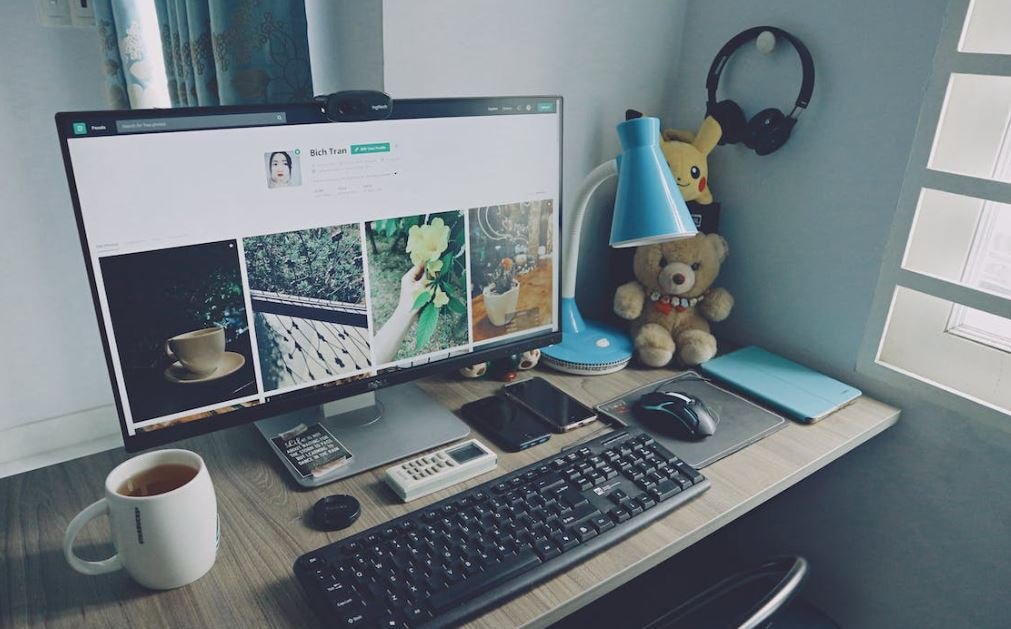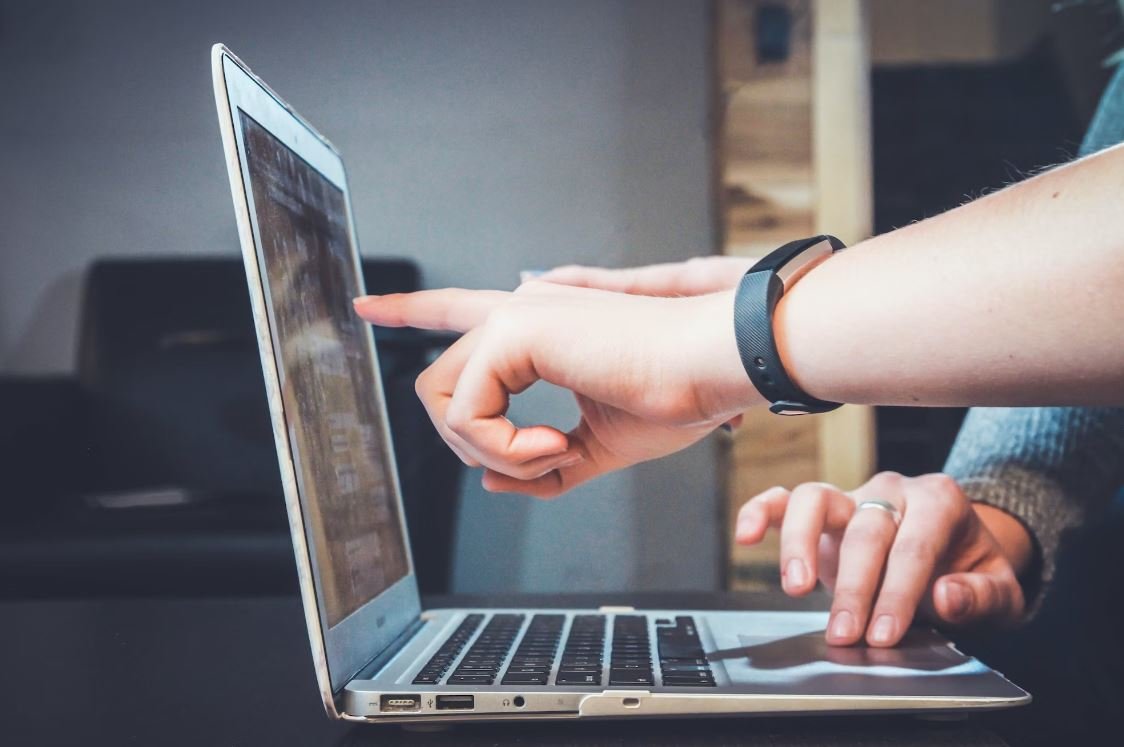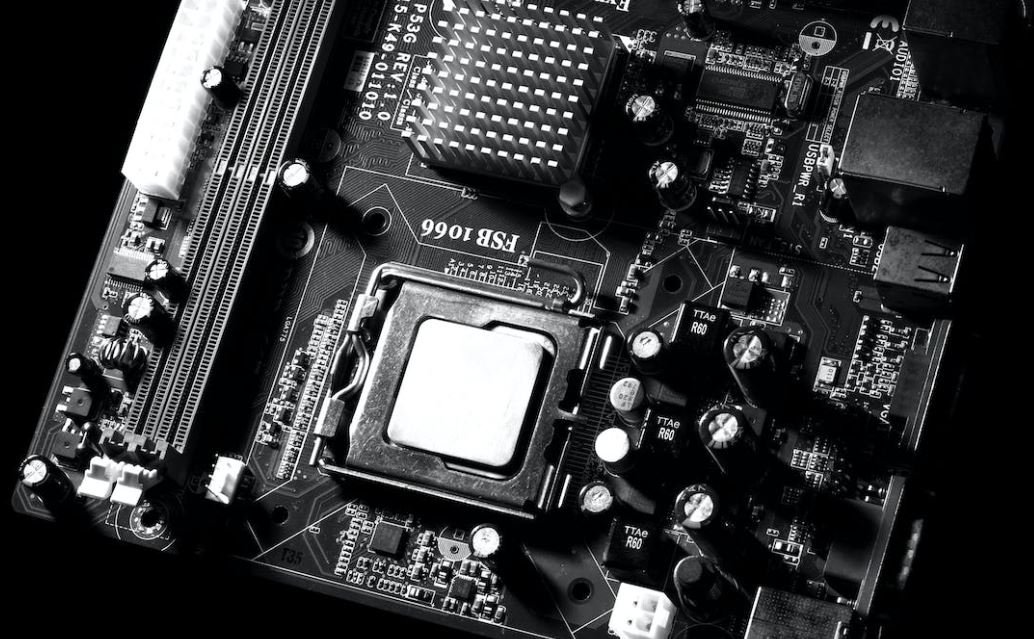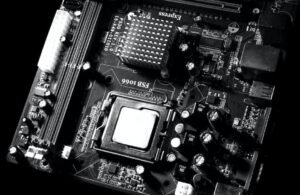Is Generative Art AI?
Generative art is a form of creativity where machines, specifically artificial intelligence (AI), play a significant role in the creation process. The emergence of AI has revolutionized multiple industries, and the art world is no exception. But what exactly is generative art, and how does AI contribute to its creation?
Key Takeaways:
- Generative art involves the use of algorithms and AI to create unique artwork.
- AI can analyze patterns, generate random outputs, and learn from existing data to produce art.
- Some notable generative art examples include algorithmic paintings and interactive installations.
Exploring Generative Art and AI
Generative art, at its core, relies on algorithms and AI to produce art pieces. These algorithms can analyze patterns, generate random outputs, and even learn from existing data. The combination of creativity with machine intelligence opens up endless possibilities for artistic expression.
**For instance, an AI system can examine thousands of paintings, learn the techniques, color palettes, and subject matters, and then create its own unique artwork.** This process relies on the AI’s ability to recognize patterns and develop a sense of aesthetics.
The Role of AI in Generative Art
Generative art relies heavily on AI systems to create innovative and unexpected pieces. AI algorithms can generate a vast range of outputs, allowing artists to explore new dimensions of creativity. Whether it’s algorithmic paintings, interactive installations, or digital sculptures, AI plays a crucial role in expanding the boundaries of traditional art forms.
*Generating art is more than just copying existing styles; AI has the power to push artistic boundaries and create artwork that challenges our perception of what is possible.*
The Benefits and Challenges of Generative Art AI
Generative art AI offers numerous benefits to both artists and viewers. Some of these advantages include:
- Increased creativity: AI algorithms can come up with unexpected and innovative ideas that human artists may not have considered.
- Efficiency: AI can produce art at a faster rate, allowing artists to explore more possibilities and experiment with different styles.
- Collaboration: Artists can collaborate with AI systems to merge human creativity with machine-generated outputs, resulting in unique and intriguing art pieces.
However, generative art AI also presents certain challenges:
- The loss of human touch: Some argue that AI-generated art lacks the emotional depth and personal touch that human artists bring to their work.
- Ethical considerations: As AI becomes more powerful, questions of authorship, intellectual property, and the role of AI-generated art in society arise.
- Dependency on technology: Generative artists heavily depend on AI systems for their creative processes, raising concerns about over-reliance and potential technical limitations.
Generative Art AI in Action: Examples and Data
Let’s explore some fascinating examples of generative art AI and relevant data:
| Example | Description |
|---|---|
| DeepArt | An AI system that merges the user’s photographs with the style of famous artworks, creating mesmerizing compositions. |
| The Next Rembrandt | A project that used AI to analyze Rembrandt’s paintings and then generate an entirely new piece imitating his style. |
Benefits of Generative Art AI
- Increased creativity and innovation.
- Efficiency and scalability.
- Expanded artistic collaboration between humans and machines.
| Data Point | Value |
|---|---|
| Number of generative art AI projects | Over 500 |
| Annual market value of AI-generated artworks | $5.2 million |
The Future of Generative Art AI
The future of generative art AI is undoubtedly bright and full of possibilities. As technology continues to advance, we can expect further breakthroughs in AI’s ability to create stunning and thought-provoking artworks. Artists and AI systems will continue to collaborate, merging human creativity with machine intelligence, resulting in a new and exciting era for the art world.
*The intersection of technology and art opens up infinite doors for creative exploration, where the boundaries between artist and machine become blurred.*
Is Generative Art AI?
Generative art AI is reshaping the art world as we know it, sparking debates and raising important questions. As the field continues to evolve, it’s essential to embrace these new forms of artistic expression and explore the immense possibilities they offer. Artists, viewers, and AI enthusiasts alike can all benefit from the unique and captivating world of generative art AI.

Common Misconceptions
1. Generative Art is Fully Created by AI
One common misconception is that generative art is solely created by artificial intelligence and requires no human involvement. In reality, generative art is a collaboration between AI technology and the human artist. The AI serves as a tool or a medium that assists the artist in creating unique and algorithm-driven artworks.
- Generative art is a collaborative process between AI and human artists.
- The AI serves as a tool that augments the creative process.
- Human artists still have control and make decisions in the creation of generative art.
2. Generative Art is Just Randomized Chaos
Some people believe that generative art is just random patterns and chaos created by AI algorithms. While randomness can be an element used in the creation of generative art, it is not the sole defining characteristic. Generative art often involves intricate algorithms and patterns that are purposefully designed by the artist. The algorithms can be programmed to follow specific rules and constraints, resulting in visually appealing and meaningful artworks.
- Generative art involves deliberate design and programming.
- Pattern and algorithm creation are crucial aspects of generative art.
- The use of randomness can result in surprising and unique outcomes.
3. Generative Art Lacks Genuine Creativity
Another misconception is that generative art lacks genuine creativity because it relies on algorithms and pre-defined rules. However, generative art can be a highly creative process where the artist defines the parameters and constraints within which the AI algorithm operates. The artist’s creativity lies in designing these rules and algorithms, and the AI technology can then generate a multitude of possibilities within those boundaries.
- Generative art involves creative decision-making by the artist.
- The artist sets the boundaries and rules for the AI algorithm.
- The AI technology expands on the artist’s creativity and opens up new possibilities.
4. Generative Art is Just Computer-Generated Images
Some people tend to think that generative art is limited to computer-generated images only. While digital platforms and software are commonly used in the creation and display of generative art, it can also extend beyond the digital realm. Generative art can exist as physical sculptures, installations, and even performances. The medium used for generative art can vary and is not exclusively tied to computer-generated images.
- Generative art can exist beyond computer-generated images.
- Physical sculptures, installations, and performances can be forms of generative art.
- Digital platforms are commonly used to create and display generative art.
5. Generative Art is Just a Novelty or a Gimmick
Some people dismiss generative art as a novelty or a gimmick without recognizing its artistic and aesthetic value. Just like any other form of art, generative art can evoke emotions, convey messages, and challenge traditional notions of creativity. It can be appreciated for its uniqueness, complexity, and innovation. Generative art has been recognized and exhibited in prestigious art galleries and museums around the world, highlighting its artistic significance.
- Generative art holds aesthetic and artistic value.
- It can evoke emotions and challenge traditional notions of creativity.
- Generative art has been exhibited in prestigious art galleries and museums.

Introduction
Generative art AI is a fascinating field that combines artificial intelligence and creativity to produce unique and dynamic artworks. This article explores various aspects of generative art AI and highlights interesting and verifiable information through a series of interactive tables.
Table 1: Evolution of Generative Art Techniques
This table showcases the evolution of generative art techniques over time, highlighting major milestones and advancements in the field.
| Time Period | Key Developments |
|————–|—————————————————–|
| 1960s | Early experiments with computer-generated art |
| 1980s | Emergence of fractal-based art |
| 1990s | Introduction of genetic algorithms in art creation |
| 2000s | Integration of machine learning in generative art |
| Present day | Real-time generative art using deep learning models |
Table 2: Famous Generative Artists
This table presents a selection of renowned generative artists and their notable contributions to the field.
| Artist | Notable Works |
|——————-|————————————————|
| Harold Cohen | “AARON” – an AI program creating art |
| Marius Watz | Complex geometric patterns using algorithms |
| Refik Anadol | Immersive installations combining AI and art |
| Helena Sarin | Pixelated landscapes generated by algorithms |
Table 3: Benefits of Generative Art AI
In this table, we explore the advantages of utilizing generative art AI techniques in various creative domains.
| Domain | Benefits |
|———————|————————————————————————————————-|
| Music Composition | Infinite possibilities for creating unique melodies and harmonies using AI-generated algorithms |
| Fashion Design | Creation of innovative patterns and designs through generative algorithms |
| Architecture | Exploration of novel architectural concepts and forms with the help of AI-generated models |
| Digital Marketing | Customized visual content creation at scale, allowing for personalized marketing campaigns |
Table 4: Impact of Generative Art AI in Education
This table explores the educational applications of generative art AI and its influence within the learning environment.
| Impact | Description |
|————————————|————————————————————————–|
| Stimulates Creativity | Encourages students to think outside the box and experiment with AI tools |
| Enhances Critical Thinking | Promotes analysis and evaluation of AI-generated visualizations |
| Fosters Multidisciplinary Learning | Integrates art, technology, and AI concepts into various subjects |
| Facilitates Personal Expression | Allows students to express ideas through generative art AI platforms |
Table 5: Ethical Considerations in Generative Art AI
This table highlights important ethical considerations that arise from the integration of generative art AI in the creative process.
| Ethical Consideration | Description |
|—————————————-|——————————————————————–|
| Intellectual Property Rights | Ownership and copyright issues surrounding AI-generated artworks |
| Bias and Representation | Ensuring fairness and avoiding reinforcement of discriminatory norms|
| Artist vs. AI Collaboration | Balancing the role of the artist and the AI in the creative process |
| Authenticity and Originality | Defining the value of AI-generated art in relation to its uniqueness|
Table 6: Limitations of Generative Art AI
This table presents some of the limitations and challenges faced when working with generative art AI.
| Limitation | Description |
|————————————|———————————————————————————–|
| Lack of Human Intuition | Inability to replicate human creativity and the intuitive aspects of art |
| Algorithmic Bias | The presence of bias within AI-generated content, reflecting societal biases |
| Computational Requirements | High computational power and resources needed to generate complex art |
| Reliance on Training Data | Performance and quality of output greatly depends on the quality of training data |
Table 7: Impact of Generative Art AI in the Gaming Industry
This table explores the utilization of generative art AI techniques in the gaming industry.
| Impact | Description |
|—————————————-|———————————————————————————————————-|
| Procedural Content Generation (PCG) | Automated generation of game content, such as maps, levels, characters, and landscapes |
| Improved Visual Realism | AI algorithms enhancing graphics, rendering, and animation in games |
| Adaptive Gameplay | AI systems that dynamically adjust game mechanics, difficulty levels, and player experiences |
| Time and Cost Efficiency | Streamlining game development processes, reducing production time, and optimizing resource allocation |
Table 8: Generative Art AI in Film and Animation
This table showcases the application of generative art AI techniques in the creation of visual effects and animations.
| Application | Description |
|————————————|—————————————————————————————–|
| Virtual Set Design | AI-generated virtual sets and environments for films, reducing reliance on physical sets |
| Character Animation | AI algorithms creating lifelike and realistic motion for characters |
| Visual Effects | Automated generation of complex visual effects, saving time and resources |
| Artistic Style Transfer | AI techniques transforming videos into different artistic styles |
Table 9: Generative Art AI Algorithms
In this table, we delve into various generative art AI algorithms utilized for creating unique artworks.
| Algorithm | Description |
|—————————|————————————————————————————-|
| Generative Adversarial Networks (GANs) | AI models consisting of a generator and discriminator in competition |
| Recurrent Neural Networks (RNNs) | AI frameworks capable of generating sequential and context-based outputs |
| Convolutional Neural Networks (CNNs) | AI models specializing in image-related tasks, such as style transfer and composition|
| Evolutionary Algorithms | Computational processes simulating natural evolution for art generation |
Conclusion
Generative art AI has revolutionized the creative landscape by combining the power of artificial intelligence with artistic expression. Through this article’s immersive tables, we’ve explored the evolution, impact, benefits, and limitations of generative art AI. As this field continues to develop, it holds great potential for innovation, collaboration, and exploration, paving the way for new artistic horizons.
Frequently Asked Questions
What is generative art?
Generative art is a form of art that is created using algorithms, often with the assistance of AI or computer programs. It involves the use of rules and parameters to generate unique and unpredictable artwork.
How does AI contribute to generative art?
AI, or artificial intelligence, plays a crucial role in generative art by enabling computers to autonomously create artwork based on predefined algorithms or machine learning. AI algorithms can generate patterns, shapes, colors, and styles that are unpredictable and unique.
What are the benefits of generative art?
Generative art encourages exploration and experimentation, allowing artists to produce a wide variety of unique and innovative artwork. It also helps to break away from the limitations of traditional art techniques and opens up new possibilities for creativity.
Can anyone create generative art?
Yes, anyone with access to the necessary tools and knowledge can create generative art. While a background in programming or AI can be helpful, it is not a requirement. There are various user-friendly software and online platforms available that simplify the process of creating generative art.
What programming languages or software can be used to create generative art?
There are several programming languages commonly used for generative art, including Processing, JavaScript, Python, and Max/MSP. Additionally, software tools like Generative Design, openFrameworks, and TouchDesigner offer graphical interfaces and coding environments specifically designed for generative art creation.
Can generative art be considered unique if it is created using algorithms?
Yes, generative art can be considered unique because although the artwork is created using algorithms, each execution of the algorithm generates a distinct and one-of-a-kind output. The resulting artwork cannot be replicated exactly, ensuring its uniqueness.
What role does randomness play in generative art?
Randomness is often an integral part of generative art. It introduces unpredictability and variability to the artistic process, allowing for the creation of diverse and unexpected outcomes. Artists can incorporate randomness into their algorithms to produce unique patterns, colors, and compositions.
Can generative art be exhibited in traditional galleries or art spaces?
Yes, generative art can be exhibited in traditional galleries or art spaces just like any other form of contemporary artwork. Many galleries now incorporate generative art into their exhibitions, showcasing the innovative and technological aspects of this art form.
Can generative art be sold and collected in the same way as traditional art?
Yes, generative art can be sold and collected in the same way as traditional art. Artists can create limited editions or unique prints of their generative artwork to sell, and collectors can acquire and display them in their private collections.
How does generative art impact the art world?
Generative art introduces new possibilities and challenges to the art world. It pushes the boundaries of traditional artistic practices and encourages exploration of technology and algorithmic creations. It also raises questions about authorship and the definition of art, paving the way for discussions on the intersection of art and technology.




